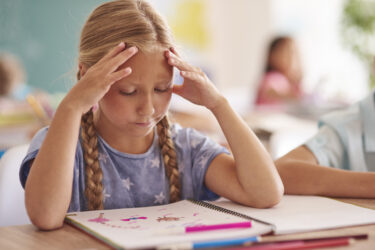Phew! I was relieved that this learning experience was tackled with ease. If my memory serves me well, my own experience was quite different. I vaguely recall many bruises and a damaged self-esteem. When my daughter became “of age,” her attempts to ride her bike were much like mine. I thought she would never let us take the training wheels off.
If you have yet to help your child learn this skill, you may be surprised to learn that this benchmark in your child’s development will interest him as much as it does you. In Your Baby and Child (Knopf), renowned psychologist Penelope Leach writes that riding a two-wheeler “may be a status symbol as well as a heart’s desire” for children.
At around the age of 5, your child will start to notice that others his age are beginning to learn to ride bikes, and he will want to learn, too – not only for the sheer joy of it, but to fit in. Yet learning to ride a “big bike” without the use of training wheels can be difficult for some children, for a plethora of reasons. There are many ways that parents can facilitate a painless and joyful experience.
The Best Time to Start
There is no magical age to start, but you can follow reasonable guidelines. When your child has become proficient on a bicycle equipped with training wheels, or when he has reached the age of 5, he is probably ready. If he is tentative and nervous even with training wheels, you should probably wait.
Do not force a child to ride if he is extremely afraid because you could make matters worse. As with most developmental benchmarks, there is a range when it comes to readiness. Some children are ready to ride a bike without training wheels at age 4, while others are not ready until 6 or 7.
Before You Hit the Road
Talk to your child about your own experience. Tell him that learning to ride a bike is a challenging but exhilarating experience. Read positive and familiar literature with your child on the subject. Franklin Rides a Bike by Paulette Bourgeois (Scholastic, Inc.) is a great book about the trials and tribulations of mastering a two-wheeler, and it also examines the social pressures of riding without training wheels.
You can also offer incentives. This can be a tangible reward such as a new helmet or some cool decals for your child’s bike frame. I promised my daughter that we would go on a family bike trip to some nearby trails we had heard about.
Safety First
Most parents know that it’s imperative to wear a helmet, and they insist that their child use one. However, parents too should use helmets. According to the Consumer Product Safety Commission, approximately 900 people – including 200 children – are killed annually in bicycle-related incidents. Since more than 60 percent of these deaths involve a head injury, a helmet should be considered standard equipment. Children learn by imitation, so if all family members wear helmets while riding your child won’t think twice about it.
According to the National Highway Traffic Safety Committee, the Consumer Product Safety Committee (CPSC) issues standards for bike helmets: “Young children on bicycles suffer a higher proportion of head injuries than older bicyclists. Under the new standard, bicycle helmets for children ages 1 – 5 cover a larger portion of the head than helmets for older persons.” Look for the CPSC sticker on the inside of your child’s helmet, and follow guidelines for the correct fit. You may want your child to use elbow pads and kneepads as well. They will not only keep nasty cuts to a minimum, but they give most new riders some extra security.
Traffic is an obvious no-no. Practice at the end of a cul-de-sac, on a flat driveway or at a local park. Teach your child how to handle a fall – to roll versus throwing out a limb to break a fall. Also be sure that your child is learning on a bicycle that fits him well (not too small or too big). Generally, a 12-inch or 16-inch wheel is appropriate for learners. While straddling his bike seat, your child should be able to touch the pavement with a flat foot. Overall, with a few of these simple tips in mind and a few hours at your local park, your child will soon be riding away from you – assistance free!
Myrna Beth Haskell is a freelace writer and mother of two.





